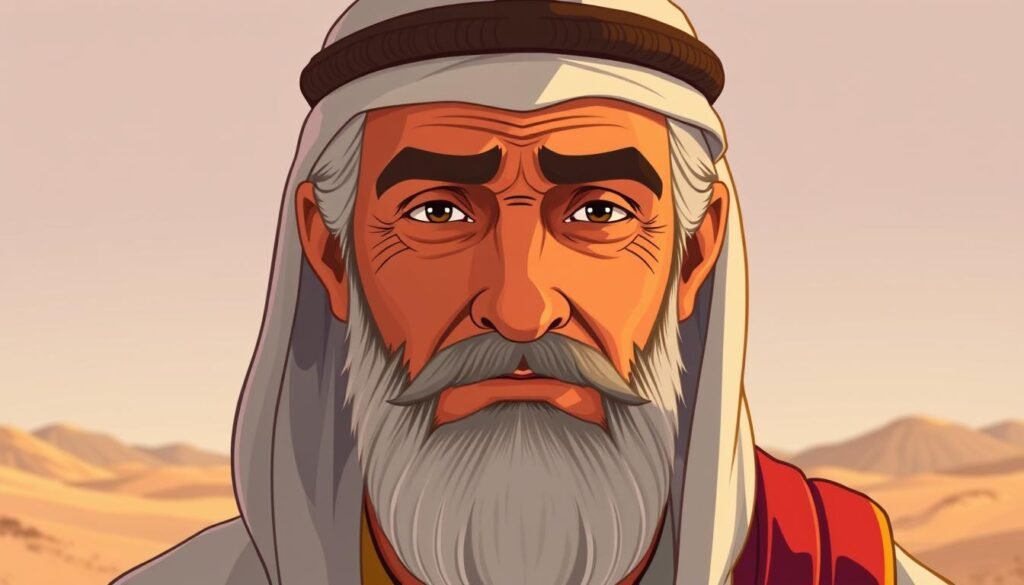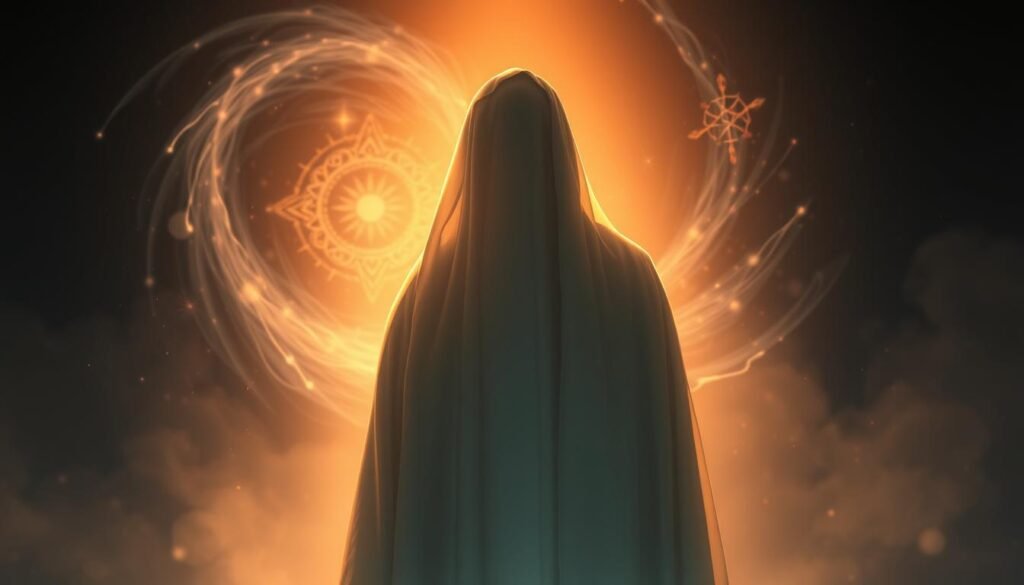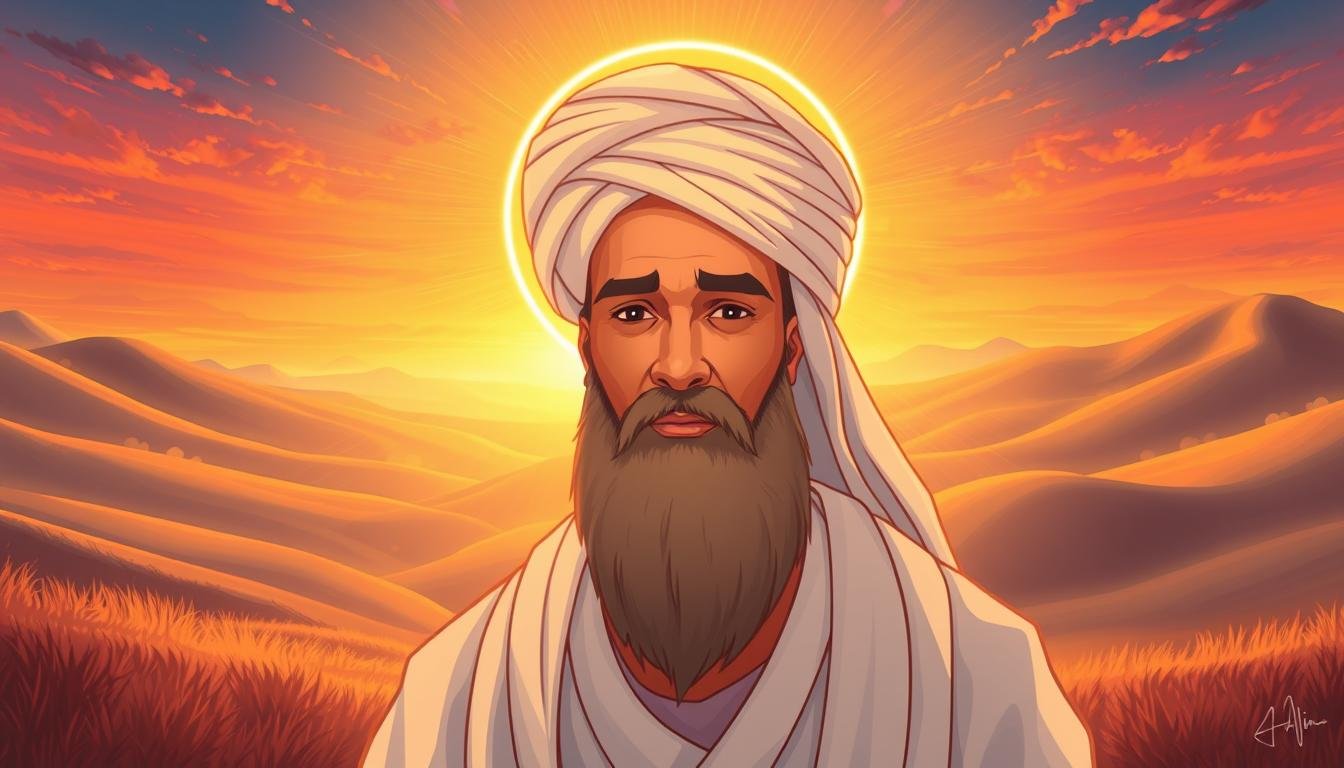Exploring the Islamic concept of the Mahdi, I see how important he is. He is expected to bring fairness and justice to the world. The Mahdi is a key figure in Islamic beliefs, said to bring peace and prosperity for seven, eight, or nine years.
The Mahdi’s role is deeply connected to justice and a savior. Hadiths, which are key in Islamic tradition, tell us about the Mahdi’s character and mission. They show how his rule will change the world. By looking at these Hadiths, we learn more about the Mahdi’s role and his importance today.
Understanding the Concept of Mahdi in Islamic Tradition
The Mahdi is a key part of Islamic eschatology. It comes from the Arabic root “h-d-y,” meaning divine guidance. Looking into the Mahdi concept, we see its historical roots and the views of Sunni and Shia Islam.
The Mahdi is thought to come at the End of Times. He will bring justice and fairness to a world full of injustice and oppression.
In Islamic tradition, the Mahdi is seen as a key figure for a golden age. This age will be marked by peace, prosperity, and spiritual growth. Shia Islam focuses more on the Mahdi, but Sunni Islam also recognizes him, with different beliefs and attributes.
The Mahdi’s name is often believed to be Muhammad. His father’s name is Abd Allah, according to Sunni traditions.
Exploring the Mahdi concept, we must look at different views in Islamic tradition. By studying the history and various perspectives on the Mahdi, we understand its importance in Islamic eschatology. The Mahdi concept is complex and rich, with much to learn from its many aspects and interpretations.
The Significance of Hadith About the Mahdi
The Hadith about the Mahdi is very important in Islam. It tells us about the Mahdi and his role in the end times. Many Hadith sources, like Tirmidhi Sahih and Abu Dawud, say the Mahdi will come from Prophet Muhammad’s (SAW) family. He will be from his daughter Fatimah Az-Zahra.
The Mahdi is expected to come when the world is full of trouble and unfairness. His arrival will be welcomed by both the earth and heaven. The Hadith says he will bring justice to the world, ending the tyranny.
Believing in the Mahdi’s coming is a big part of Islamic faith. Many Hadith stories tell us about his traits, family, and role in the end times. By learning about the Hadith on the Mahdi, we understand more about his importance in Islam and to Muslims.
Key Prophetic Descriptions of the Mahdi’s Physical Attributes
The Mahdi’s looks are described in many prophetic sayings. These give us clues about his face and family background. Islamic tradition says he will have a wide forehead, a big nose, and a face that glows like the full moon.
His eyes will be darkened with kohl, and he will have a lovely mole on his right cheek. These traits are not just unique but also key to recognizing him.
His family ties are also highlighted, showing he comes from the Ahlul Bayt. This means he has a special family connection. He is also incredibly strong, able to move huge trees and shake mountains with his voice.

The Mahdi’s looks are more than just how he appears. They show his spiritual importance. He has a broad chest, a clear forehead, and eyebrows that meet in the middle. His smell is sweeter than musk, like Prophet Muhammad’s.
These physical traits prove the Mahdi’s special status. They highlight his role in Islamic prophecy.
Timeline and Signs of the Mahdi’s Emergence
Exploring the Mahdi’s emergence, we must know the timeline and signs. Islamic tradition says the Mahdi’s coming is preceded by key events. These include the Dajjal’s appearance, the rise of the Sufyani, and a mountain of gold from the Euphrates River.
The exact time of the Mahdi’s emergence is not clear. But it’s believed to happen in a time of big trouble. Signs like more earthquakes, ignoring Hadith, and accepting wrong things will come first. These signs will lead up to the Mahdi’s arrival.
The Mahdi’s emergence is a big deal in Islamic beliefs. Knowing the timeline and signs before it helps believers. By looking at these signs and events, we understand the Mahdi’s role in Islamic tradition better.
Most Authentic Hadith About the Mahdi and Their Sources
Exploring the Mahdi is key, and looking at authentic Hadith is vital. The Mahdi is a big deal in Islamic beliefs. He’s expected to bring justice and fairness.
Many authentic Hadith talk about the Mahdi. They say he’ll rule for 5, 7, or 9 years. This time will be filled with justice and fairness.
The Sunni collections by Bukhari, Muslim, and Abu Dawud have authentic Hadith on the Mahdi. The Shia collections by al-Kulayni and Ibn Babawayh also mention him. These Hadith tell us about the Mahdi’s looks and his commitment to following the Prophet Muhammad’s teachings.
Looking at authentic Hadith from Sunni and Shia sources helps us understand the Mahdi better. The common elements show the similarities and differences between Sunni and Shia traditions. They highlight the Mahdi’s role in Islamic beliefs.
The Mahdi’s Role in Islamic Eschatology
Exploring the Mahdi’s role in Islamic eschatology shows his big importance. He aims to bring back Islam’s true teachings, like the Quran and Sunnah. He will remove new ideas (bid’ah) that aren’t based on these sources.
The Hadith says: “The Mahdi will come from my family and will rule according to my Sunnah and will establish Islam on the Earth.” This shows how key the Mahdi is in guiding us back to Tawheed (monotheism). His role is vital for his mission’s success.

Believing in the Mahdi gives Muslims hope for a just leader. This belief unites different Islamic groups, even Sunni and Shia. It reminds us to stick to the original teachings and avoid new ideas, which is the Mahdi’s main goal.
Scholarly Interpretations of Mahdi-Related Hadith
Exploring Mahdi-related Hadith shows us how scholarly interpretations are key. Different views exist, showing the topic’s complexity. Scholars like Ibn Khaldun have shaped our understanding, with modern scholars adding their insights.
Many Islamic schools have studied these Hadith. Sunni, Shia, and Ibadi schools each have their own views. This variety helps us understand the Mahdi’s role in Islamic beliefs.
Scholars have found common themes in these Hadith. They talk about the Mahdi’s justice, looks, and connection to the Prophet. These insights help us see the Mahdi’s importance in Islamic thought, from old to new views.
Common Misconceptions About the Mahdi in Modern Times
Exploring the Mahdi, we must clear up common misconceptions in modern times. Some think the Mahdi is just a myth or has already come. But Islamic tradition says the Mahdi is real, bringing justice and fairness to the world. It’s vital to grasp the Mahdi’s role in Islamic beliefs correctly.
The Quran guides us on modesty and faith, key to the Mahdi’s mission. Looking into the Mahdi, we see how common misconceptions can distort our view. By studying real stories and history, we can truly understand the Mahdi’s importance in Islam and today.
In summary, the Mahdi is a complex figure. We must understand Islamic history and tradition well. By tackling common misconceptions, we aim for a clearer view of the Mahdi. This will help shape the future of Muslims in modern times.
Understanding the Eternal Hope the Mahdi Represents in Islamic Faith
The Mahdi is a key figure in the Islamic faith, bringing eternal hope to believers. He is seen as the savior who will come at the end of times. He will bring justice and peace, leading humanity to a better future.
This hope is a big part of the Islamic faith. It gives believers comfort and hope in today’s world.
The Mahdi is believed to be part of God’s plan. He will bring a time of spiritual and social renewal. This eternal hope comes from the teachings of the Prophet Muhammad.
It shines a light in dark times. In the 21st century, the Mahdi’s promise of a fair world inspires and comforts the Islamic community worldwide.
FAQ
What is the significance of the Mahdi in Islamic tradition?
What is the etymology and meaning of the term "Mahdi"?
How do Sunni and Shia Islam view the concept of the Mahdi?
What is the significance of Hadiths related to the Mahdi?
What are the key prophetic descriptions of the Mahdi’s physical attributes?
When and how is the Mahdi expected to emerge?
What are the most authentic Hadiths related to the Mahdi, and where can they be found?
What is the Mahdi’s role in Islamic eschatology?
How have scholars interpreted Mahdi-related Hadiths over time?
What are some common misconceptions about the Mahdi in modern times?
What is the eternal hope the Mahdi represents in Islamic faith?

Embracing Faith, One Insight at a Time!
The teachings of the Quran have always guided my path. With a deep passion for Islamic knowledge, I strive to blend the wisdom of tradition with the relevance of today, making the timeless messages of Islam accessible and meaningful for everyone.
Muslim Culture Hub is my platform to share historical insights and thought-provoking articles, exploring both well-known and lesser-discussed aspects of Islamic culture and beliefs. My mission is to create an inclusive online space where everyone can learn, strengthen their faith, and connect with the profound message of Islam.
Join the journey!
May peace be upon you.







